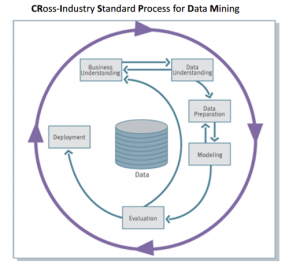pipeline这个词,应该来自linux。在linux体系下的各种命令工具的处理,支持pipeline,即管道机制,例如:
cat xxx | awk '{xxxx}' | sort | uniq 这是一种良好的接口规范,工具的功能有公共的接口规范,就像流水线一样,一步接着一步。机器学习的处理过程,也可以是pipeline。实际上scikit-learn开发了整套的pipeline机制,并封装到 sklearn.pipline命名空间下面。首先,我们看看这个库都有什么:
pipeline.FeatureUnion(transformer_list[, …]) Concatenates results of multiple transformer objects.
pipeline.Pipeline(steps[, memory]) Pipeline of transforms with a final estimator.
pipeline.make_pipeline(*steps, **kwargs) Construct a Pipeline from the given estimators.
pipeline.make_union(*transformers, **kwargs) Construct a FeatureUnion from the given trans可以看出,最关键的是 FeatureUnion、Pipeline,我们继续看看这2个对象都可以实现什么功能。
Pipeline
sklearn中把机器学习处理过程抽象为estimator,其中estimator都有fit方法,表示“喂”数据进行初始化or训练。
estimator有2种:
1、特征变换(transformer)
可以理解为特征工程,即:特征标准化、特征正则化、特征离散化、特征平滑、onehot编码等
该类型统一由一个transform方法,用于fit数据之后,输入新的数据,进行特征变换。
2、预测器(predictor)
即各种模型,所有模型fit进行训练之后,都要经过测试集进行predict所有,有一个predict的公共方法
上面的抽象的好处即可实现机器学习的pipeline,显然特征变换是可能并行的(FeatureUnion)可以实现,变换在训练集、测试集之间都需要统一,所以pipeline可以达到模块化的目的。举个NLP处理的例子:
# 生成训练数据、测试数据
X_train, X_test, y_train, y_test = train_test_split(X, y)
# pipeline定义
pipeline = Pipeline([
('vect', CountVectorizer()),
('tfidf', TfidfTransformer()),
('clf', RandomForestClassifier())
])
# train classifier
pipeline.fit(X_train, y_train)
# predict on test data
y_pred = pipeline.predict(X_test)显然,看起来pipeline训练过程只需要fit和predict,其实在pipeline内部传输过程,自动调用了fit\transform
FeatureUnion
上面看到特征变换往往需要并行化处理,即FeatureUnion所实现的功能。直接看例子:
pipeline = Pipeline([
('features', FeatureUnion([
('text_pipeline', Pipeline([
('vect', CountVectorizer(tokenizer=tokenize)),
('tfidf', TfidfTransformer())
])),
('findName', FineNameExtractor())
])),
('clf', RandomForestClassifier())
])看起来,pipeline还可以嵌套pipeline,整个机器学习处理流程就像流水工人一样。上面自定义了一个pipeline处理对象FineNameExtractor,该对象是transformer,实际上自定义个transformer是很简单的,创建一个对象,继承自BaseEstimator, TransformerMixin即可,直接上代码:
from sklearn.base import BaseEstimator, TransformerMixin
class FineNameExtractor(BaseEstimator, TransformerMixin):
def find_name(self, text):
return True
def fit(self, X, y=None):
return self
def transform(self, X):
X_tagged = pd.Series(X).apply(self.find_name)
return pd.DataFrame(X_tagged)执行一个PIPELINE,可能还少了点什么,再加上自动调参就完美了,是的,sklearn的调参通过GridSearchCV实现,pipeline+gridsearch简直是绝配。GridSearchCV实际上也有fit、predict方法,所以,你会发现,整个sklearn的机器学习是高效抽象的,代码可以写的很简洁。




